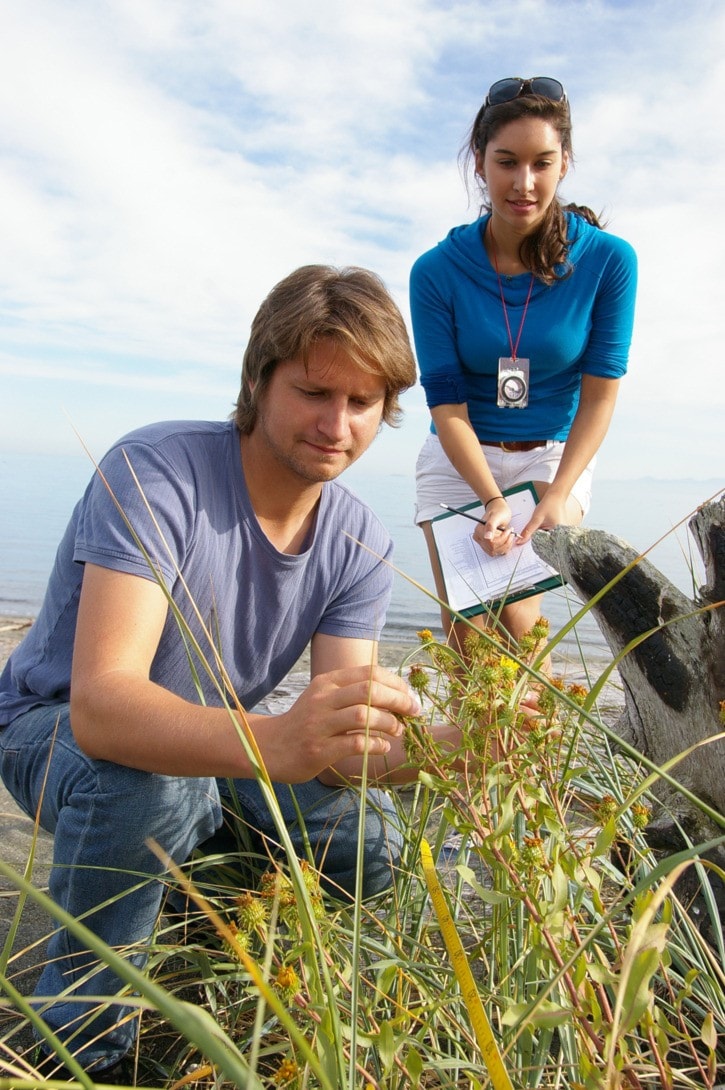An ecology class at Camosun College is helping track re-growth of native plants at Esquimalt Lagoon.
The project began in 2007 when the Esquimalt Lagoon Stewardship Initiative planted grasses and flowers on the Coburg peninsula beach to restore dune habitat on the ocean side of the lagoon.
"We didn't know if the plants would even survive. There's a lot of human disturbance from people using the beach," said ecology instructor Dave Blundon.
Each semester his students inventory everything growing in areas where the plantings took place and compare that to unaltered control areas. Research plots are intentionally unmarked, so they're just as likely to have people trample them as anywhere on the beach.
"So far what we're finding is native species are increasing, both in areas where they were planted and in control plots," Blundon said, explaining that seeds from the native species drift into the control areas.
A healthy dune ecosystem can help protect the lagoon against erosion, which has been eating away at beach since the Royal Bay gravel mine closed and cut off the constant supply of sediment that helped create the peninsula.
The roots of planted species — including dune grass, gum weed, bur weed and beach pea — help hold the sand in place. This is important when big storms hit.
"With rising sea levels and global warming, storms are becoming more intense," Blundon said. "The plants root systems should hold the sand and keep it from eroding away."
Blundon hopes the findings from his class's study will prompt new funding to plant more native species in the dunes.
The City of Colwood has looked into engineering options to prevent erosion of the beach, including replenishing the beach with sand every five to 10 years, for a cost of $2 million.
Blundon said if nothing is done to prevent erosion of the peninsula, it will turn into barrier islands over time, making travel on it impossible. The dune is only part of the solution.
"It's the natural cycle," he said. "A healthy dune will slow (erosion) down, but it won't stop it."
news@goldstreamgazette.com
